A Visit to the Wild West and Its Plants…
Over the weekend, my husband and I went away for the weekend to celebrate our 28th wedding anniversary.
We had debated on where to go and decided to make the trip to southeastern Arizona. Why this area, you may ask? Well, I have lived in Arizona for 28 years and during the time, have traveled to the northwest, southwest, southern, northern, northeast and eastern regions of the state – but I had never been to the southeastern areas. Our ultimate destination was to be the former mining town of Bisbee, now a popular tourist attraction.
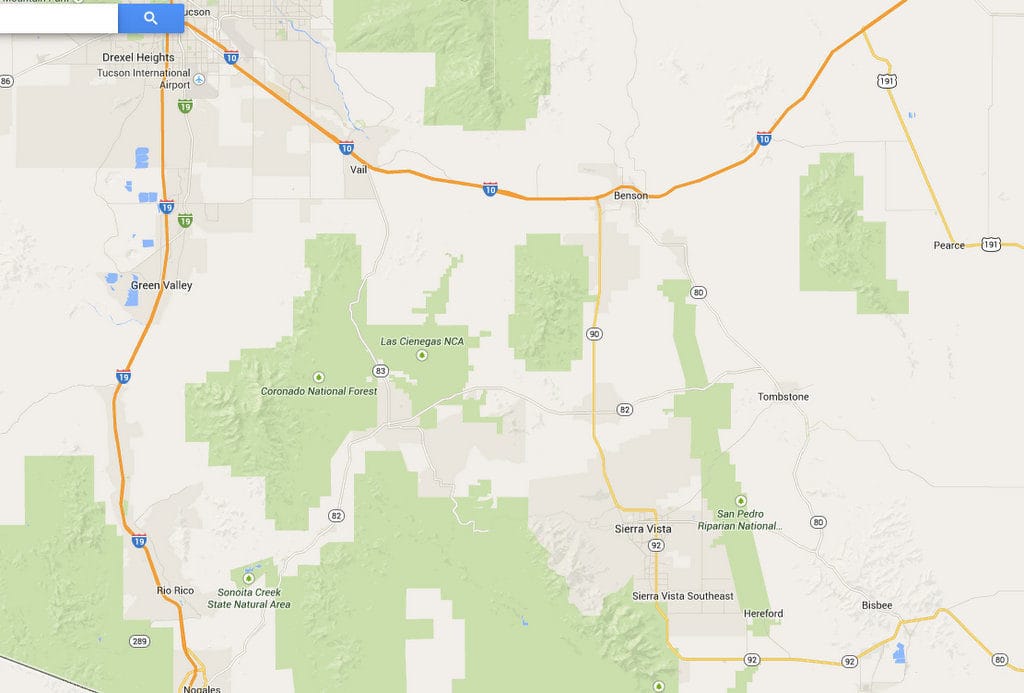
Along the way to Bisbee, we decided to visit Tombstone along the way. My husband had visited Tombstone when he was you, back when many boys dreamed of becoming a cowboy.
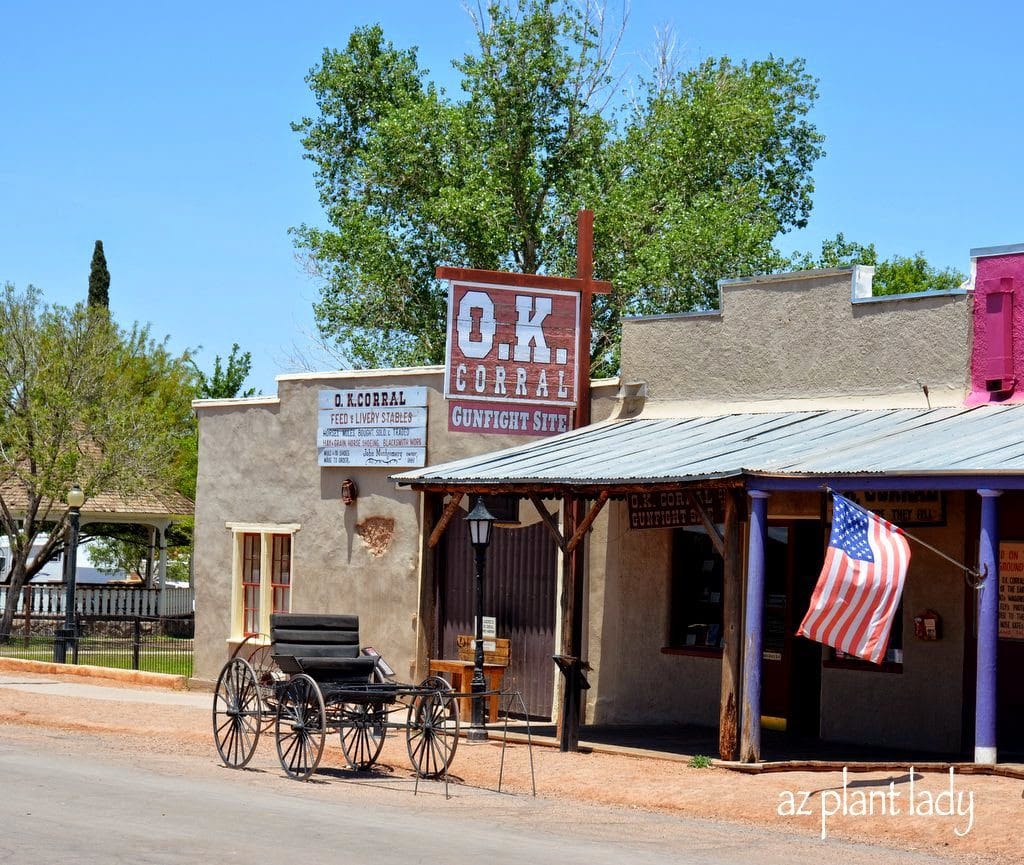
If you are a little rusty on your cowboy history, Tombstone is the place the famous gunfight at the O.K. Corral took place in 1881.
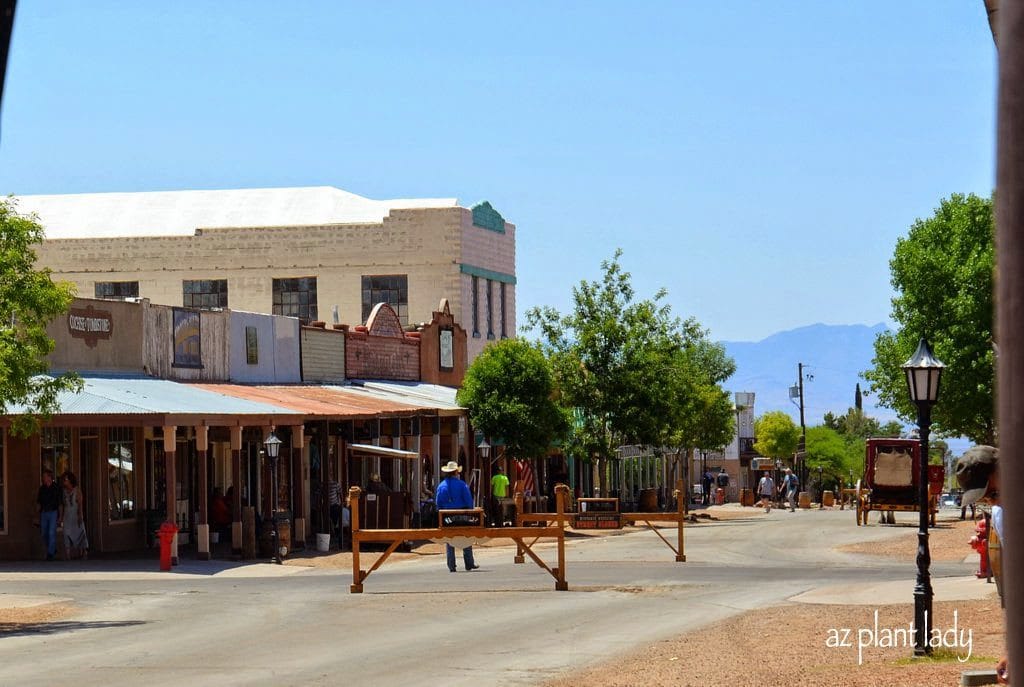
The main street is blocked off to cars and is lined on either side by stores and restaurants catering to tourists.
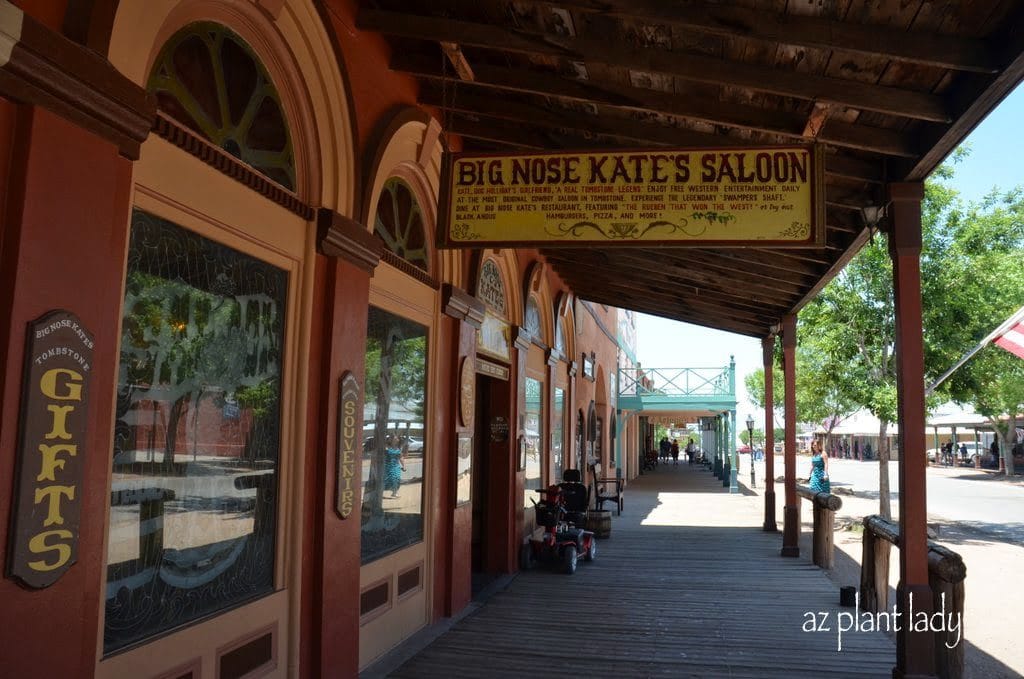
It was an interesting mixture of historical places converted into tourist attractions.
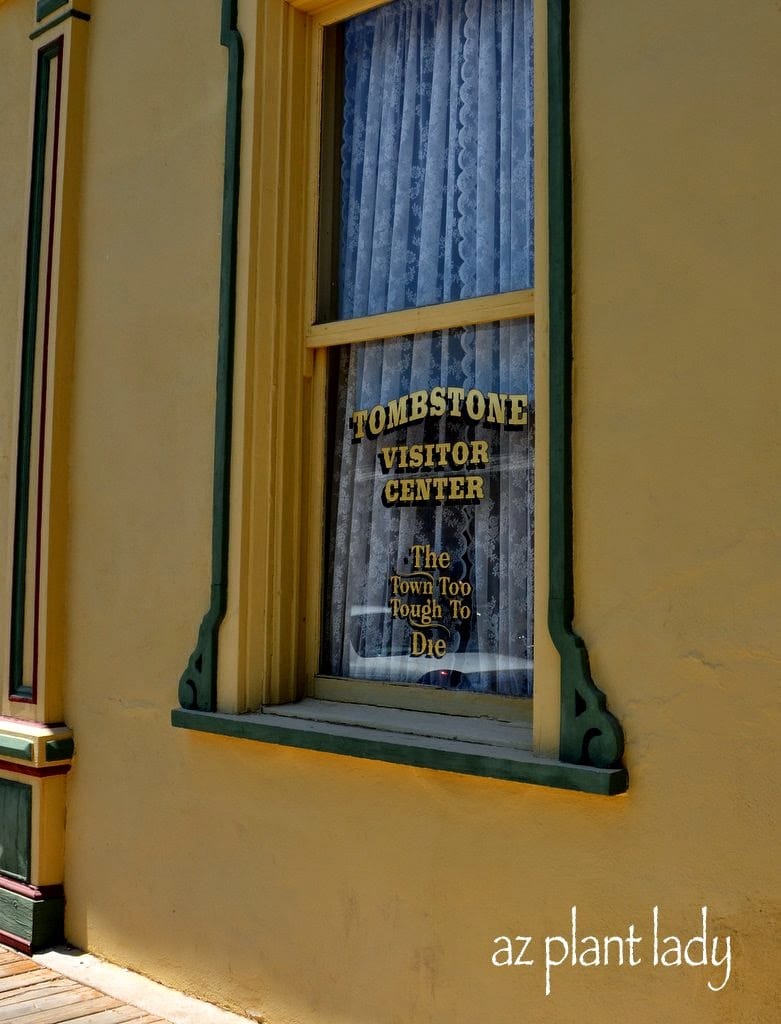
I enjoy visiting museums, so my husband and I headed over to the old courthouse, which has been turned into a museum.
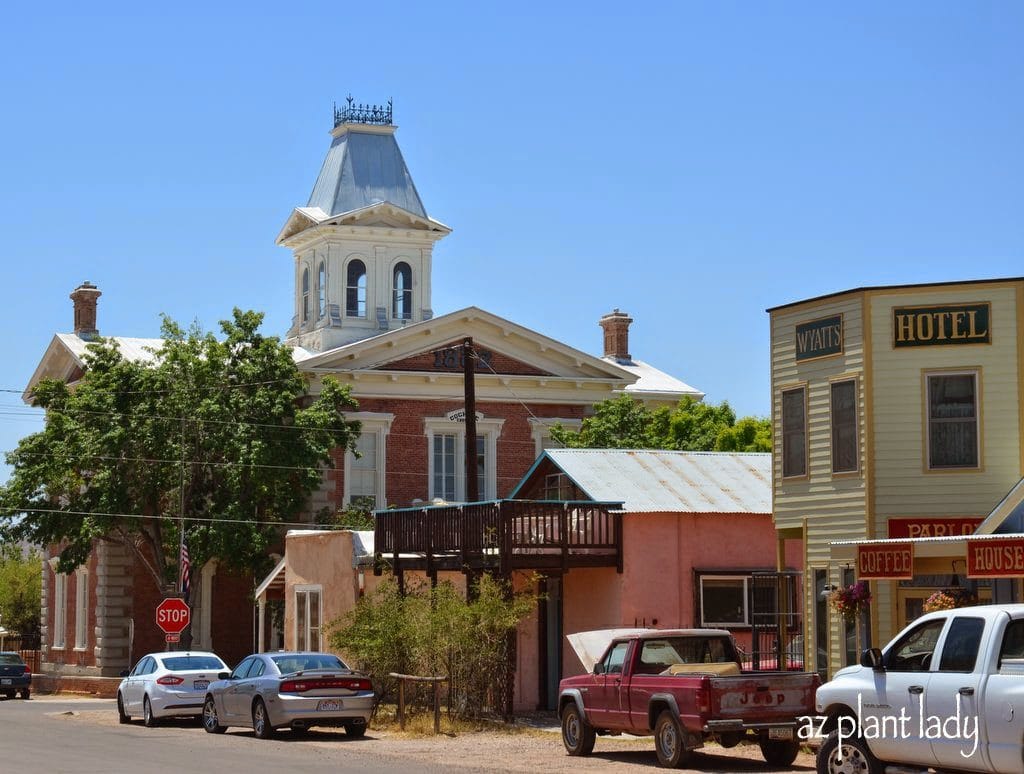
It was very interesting to learn of Tombstone’s history as a silver mining town.
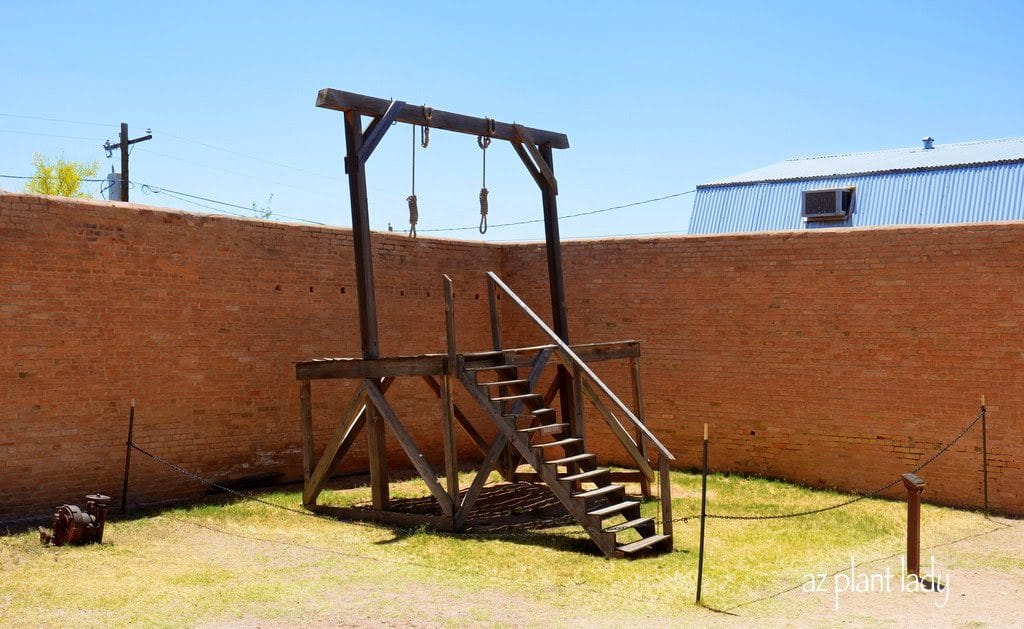
The back of the courtyard was where hangings took place.
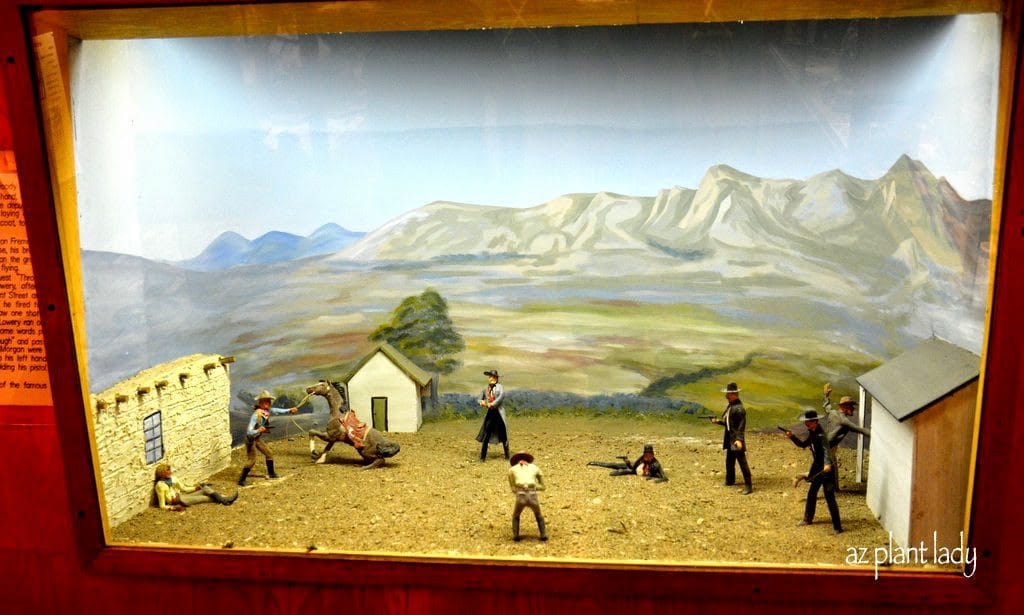
Inside, was a diorama where the famous gunfight at the O.K. Corral was depicted with a detailed description of what happened.
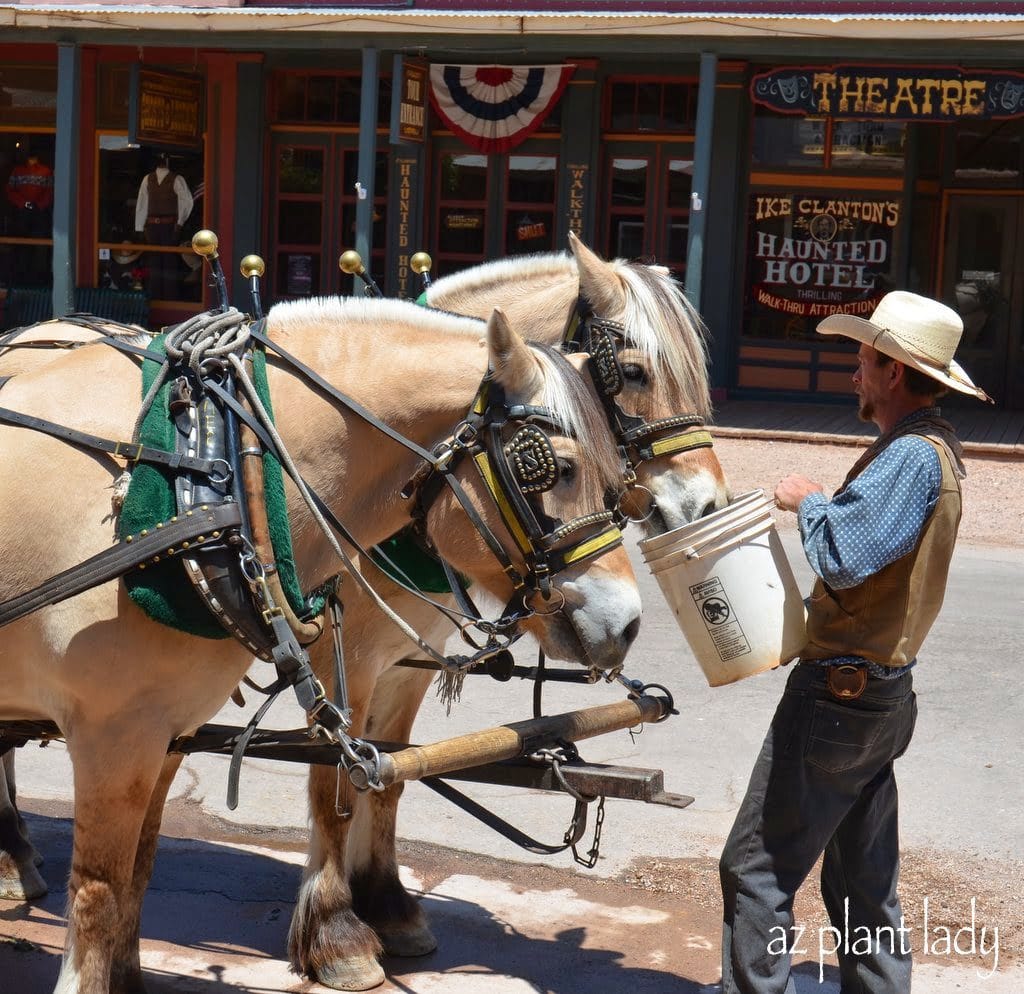
Cowboys stood along the side of the main street of Tombstone, which added to the illusion of being taken back in time.
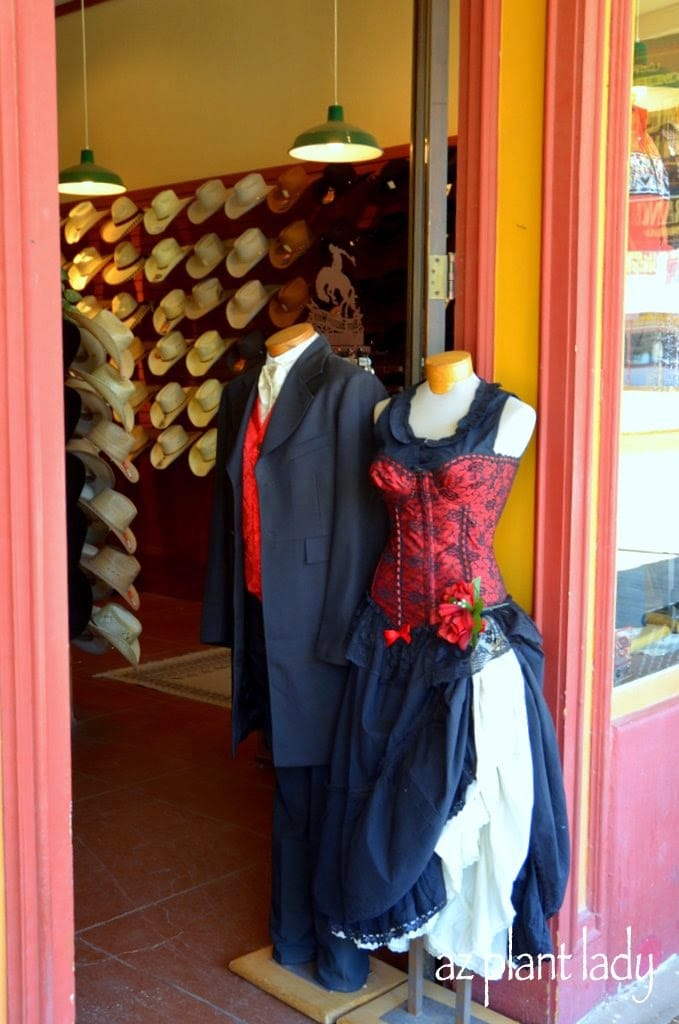
After visiting the attractions along the main street, we decided to stroll through the adjoining streets. There were many old buildings dating back to the late 1880’s that were still standing.
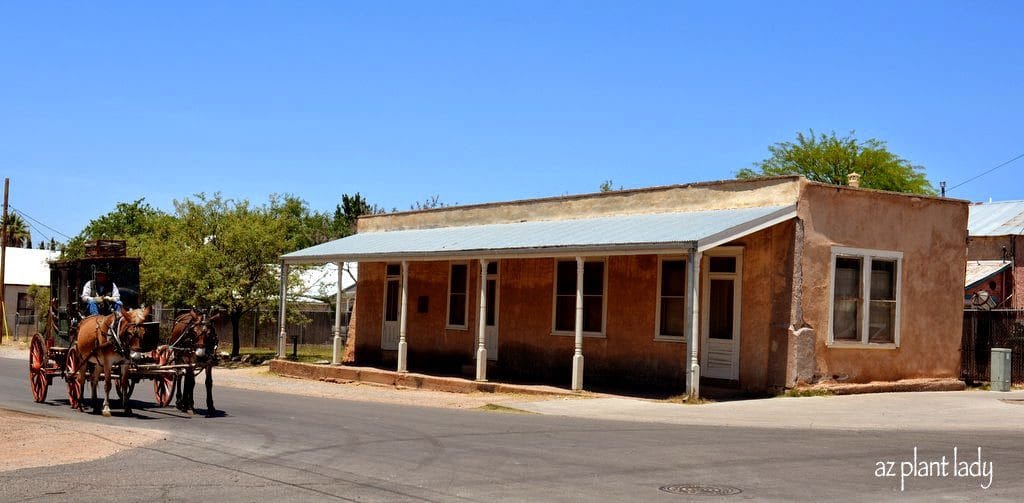
Tombstone is in zone 8a, which means that it gets down to 10 degrees in the winter months. As a result, I was interested in seeing what types of plants did well here.
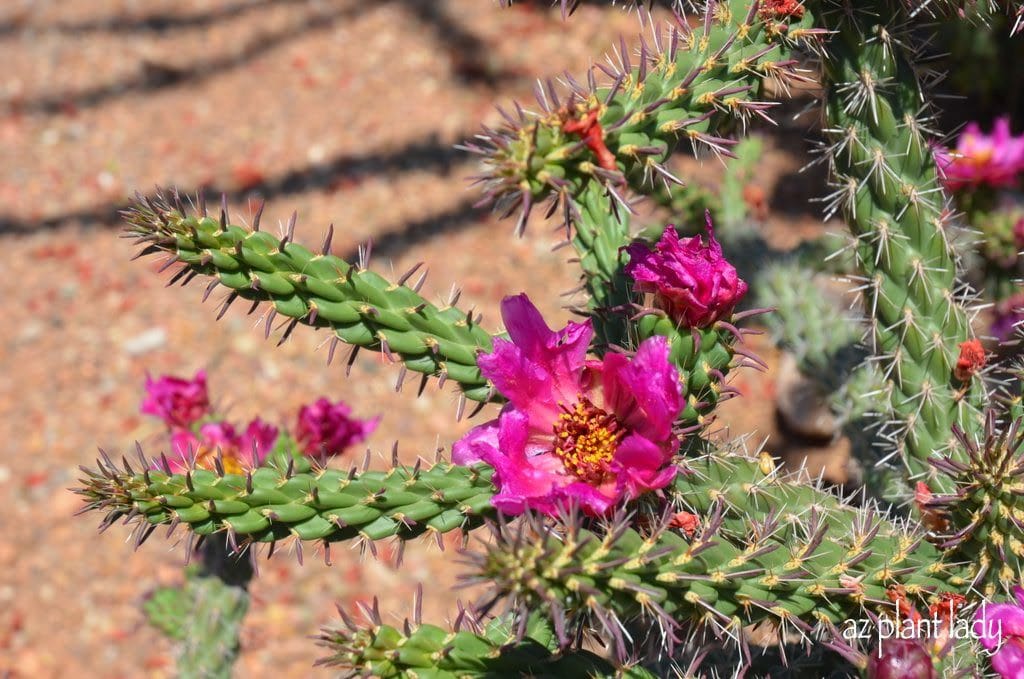
Coastal Cholla (Cylindropuntia prolifera)
Prickly pears and cholla cacti were in full bloom.
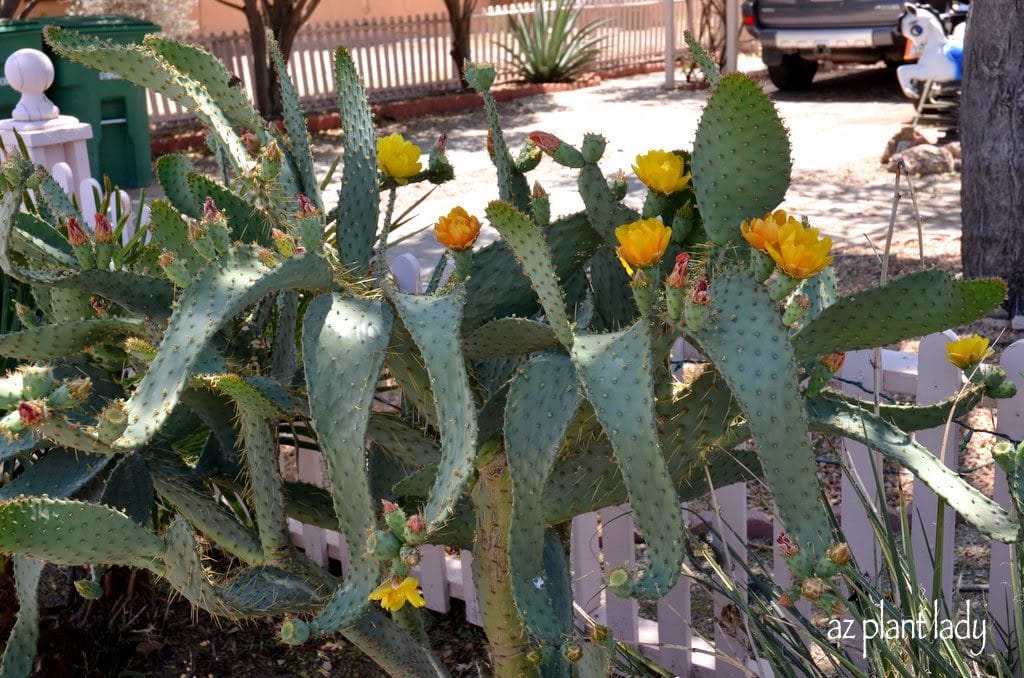
Cow’s Tongue Prickly Pear (Opuntia engelmannii)
There were no lawns to be seen and most of the landscape consisted of a variety of succulents including desert spoon, hesperaloe and yucca.
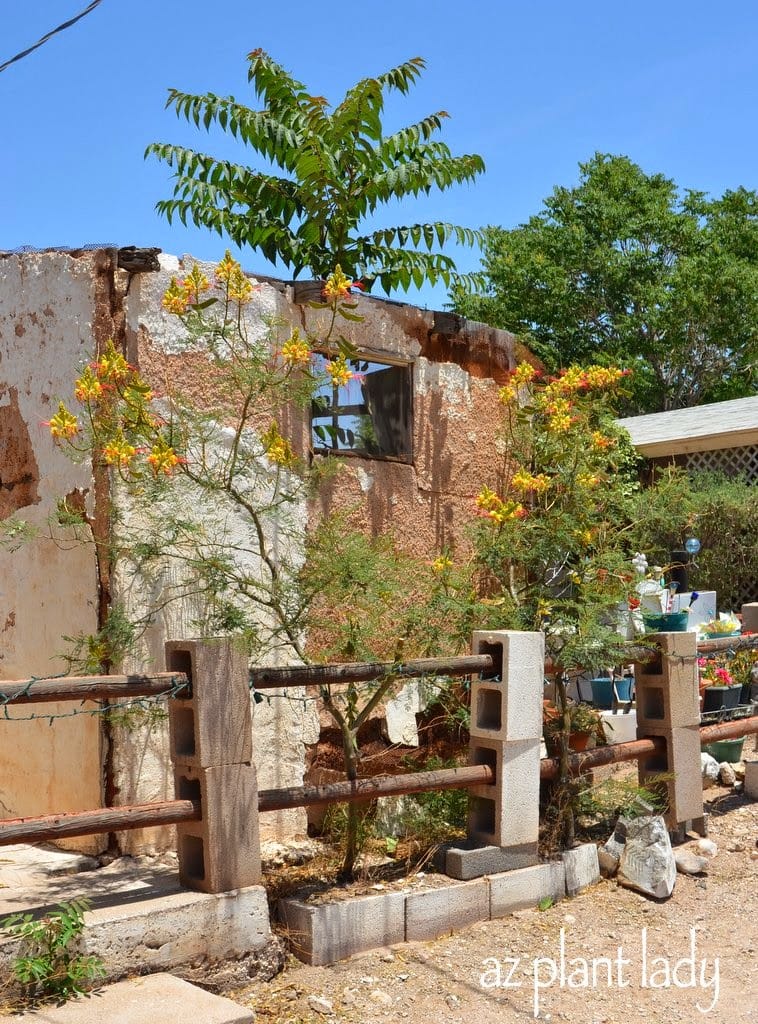
Yellow Bird-of-Paradise (Caesalpinia gilliesii)
I did see a beautiful yellow bird-of-paradise, which is usually seen in high desert areas where its more cold-tender cousins red bird-of-paradise (Caesalpinia pulcherrima) and Mexican bird-of-paradise (Caesalpinia mexicana) can struggle.
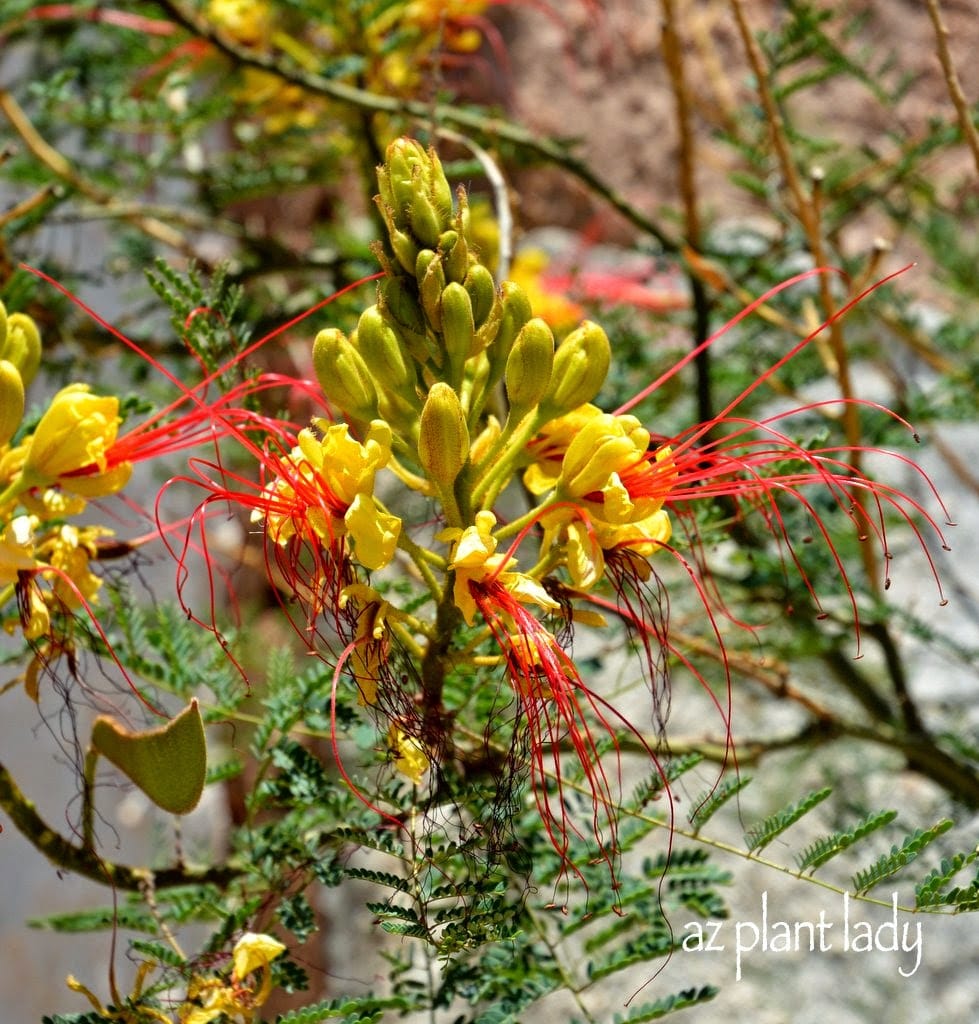
I love how the bright red stamens contrast with the yellow flowers, don’t you? Yellow bird-of-paradise is hardy to -10 degrees or zone 6.
Texas sage as also prevalent in the area.
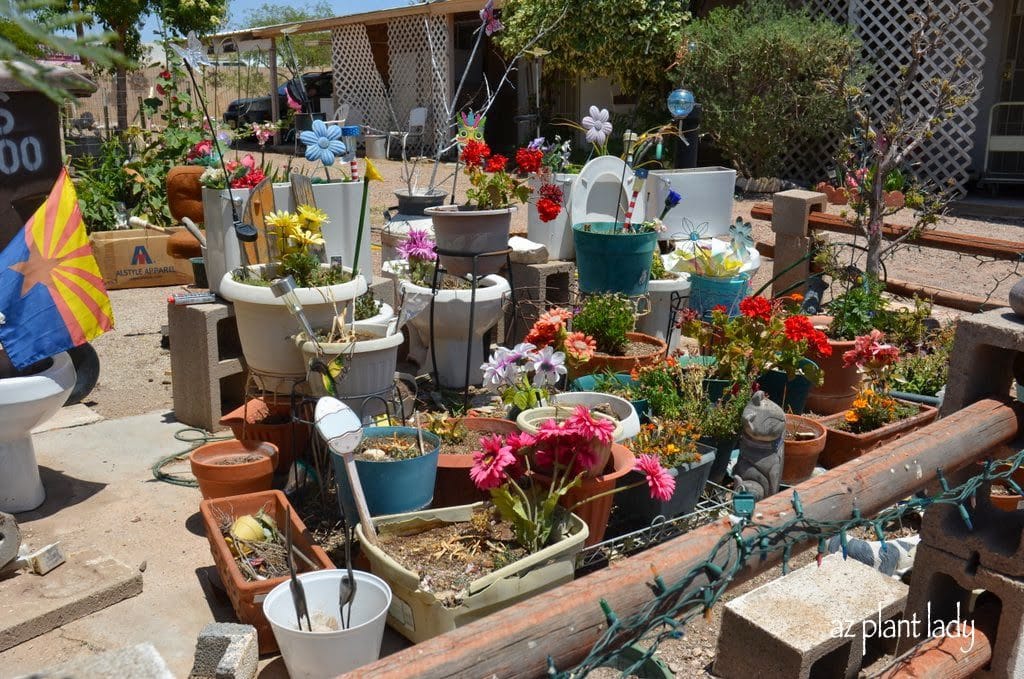
I wasn’t sure what to think of this collection of container plants.
It consisted of a mixture of plastic pots and toilets planted with live and silk flowers. I’m pretty sure my HOA wouldn’t allow this 😉
While Tombstone was much of what I expected, the history and cowboy themed attractions weren’t my favorite part of our visit…
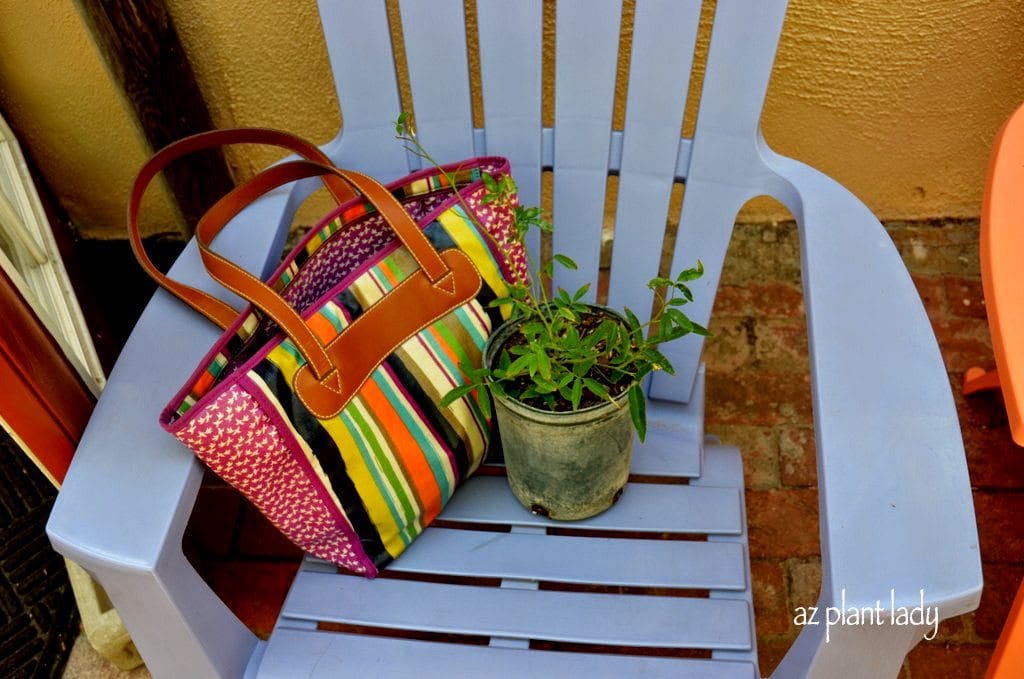

I invite you to come back for my next post, where I will share with you why this small plant made me so excited and how it is part of a very historic plant!
Join me for my next post about our adventures in Tombstone.

 Noelle Johnson, aka, 'AZ Plant Lady' is a author, horticulturist, and landscape consultant who helps people learn how to create, grow, and maintain beautiful desert gardens that thrive in a hot, dry climate. She does this through her consulting services, her online class Desert Gardening 101, and her monthly membership club, Through the Garden Gate. As she likes to tell desert-dwellers, "Gardening in the desert isn't hard, but it is different."
Noelle Johnson, aka, 'AZ Plant Lady' is a author, horticulturist, and landscape consultant who helps people learn how to create, grow, and maintain beautiful desert gardens that thrive in a hot, dry climate. She does this through her consulting services, her online class Desert Gardening 101, and her monthly membership club, Through the Garden Gate. As she likes to tell desert-dwellers, "Gardening in the desert isn't hard, but it is different."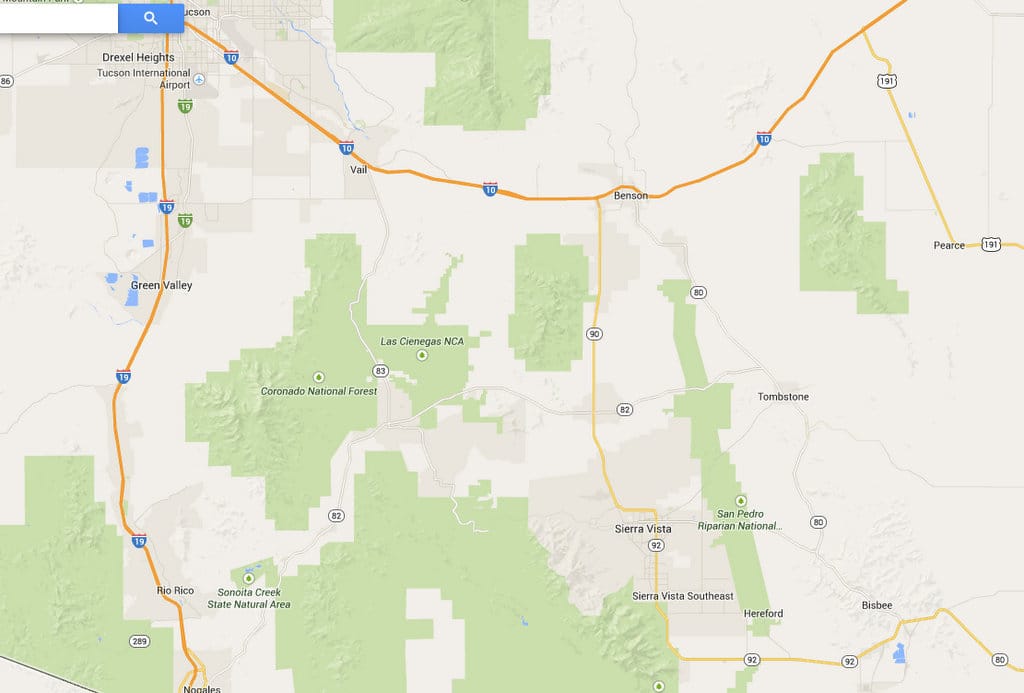
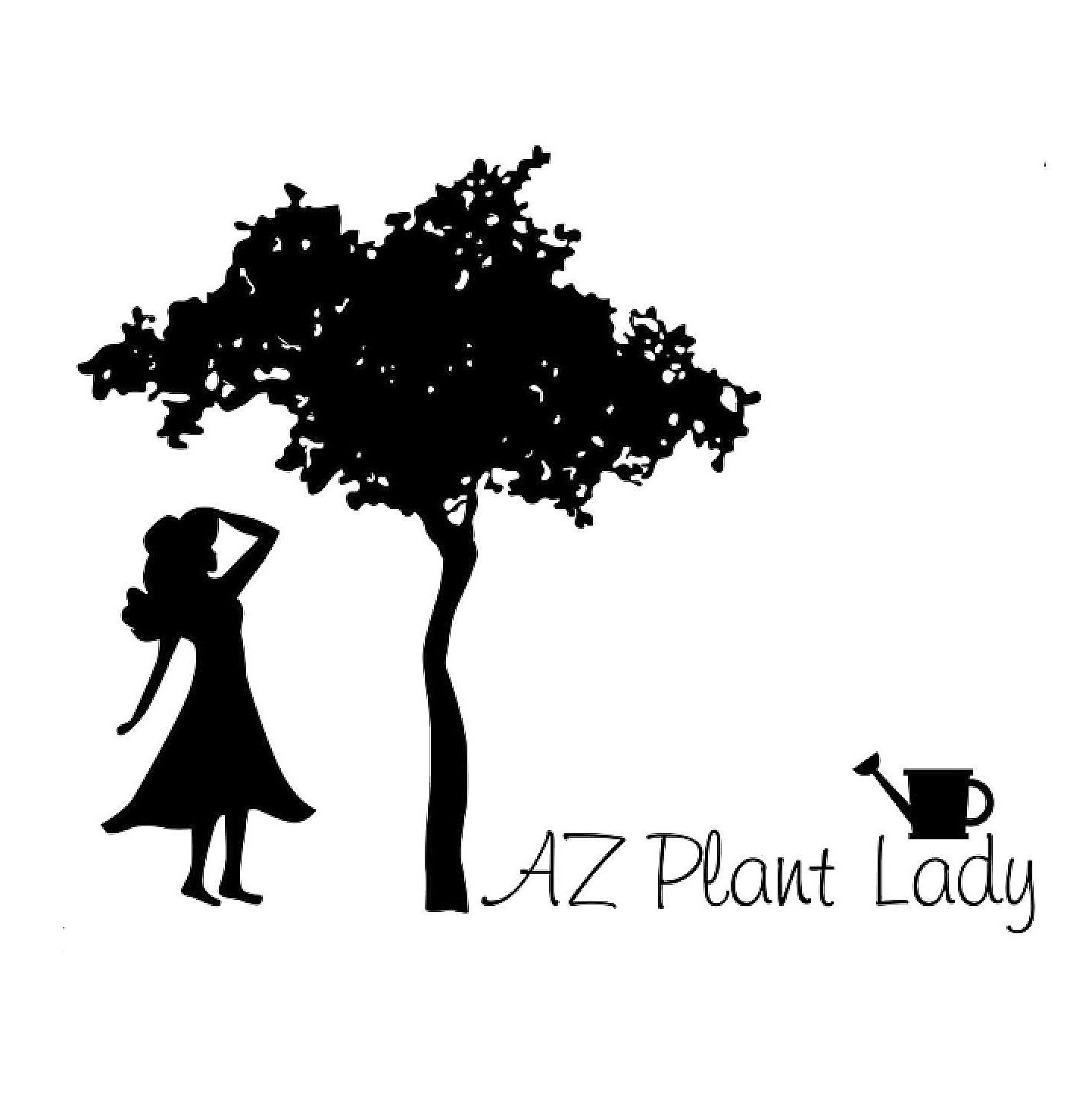
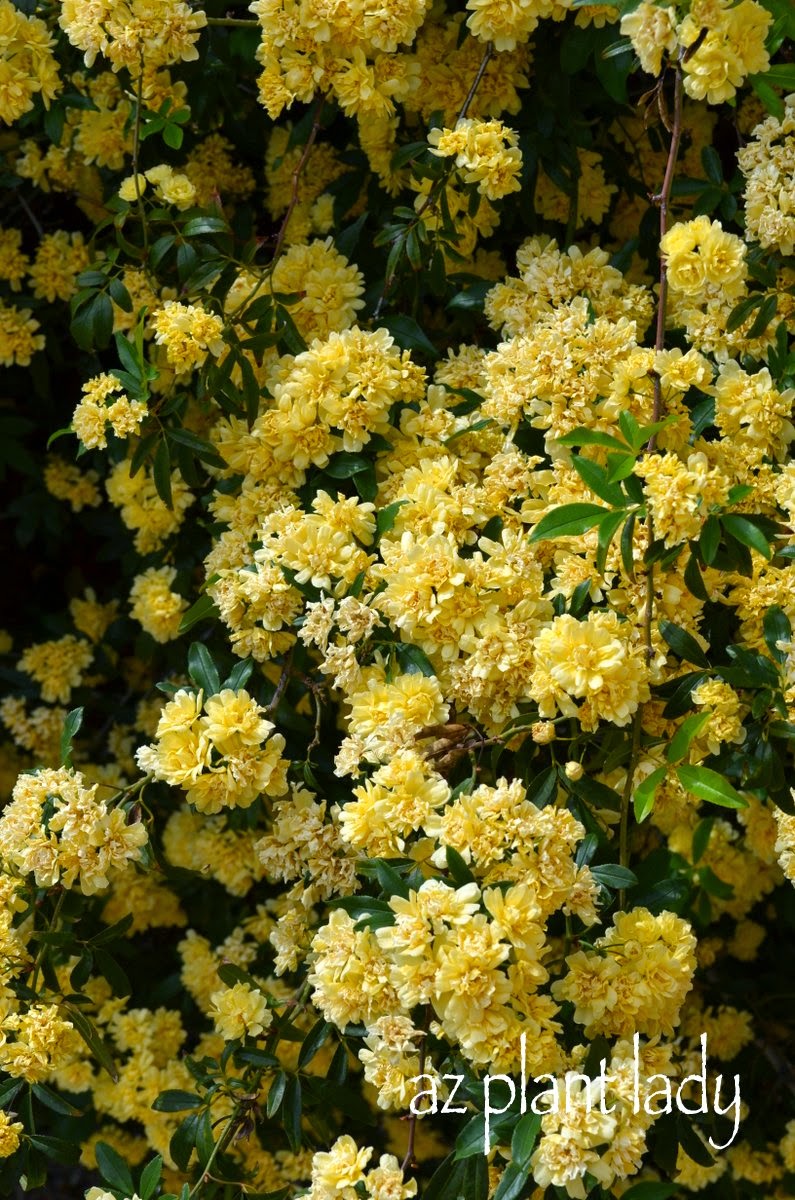










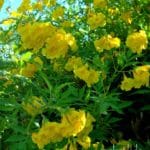
Great trip – my parents took us through there, even staying the night in Tombstone, on a month-long trip. I was going into the 6th grade, but I remember it all…you basically ventured into a variation of the same plants and climate of El Paso and even Albuquerque! Just more plant diversity:-) Wild west to be sure.
We went to Tombstone in 2001 and enjoyed it even with the shootout they had outside .I hope that you did get to see the 100+ year old rose bush that is so big it covers a whole courtyard ,the stem of this rose was as big as a full grown tree and we were lucky to see it in bloom.